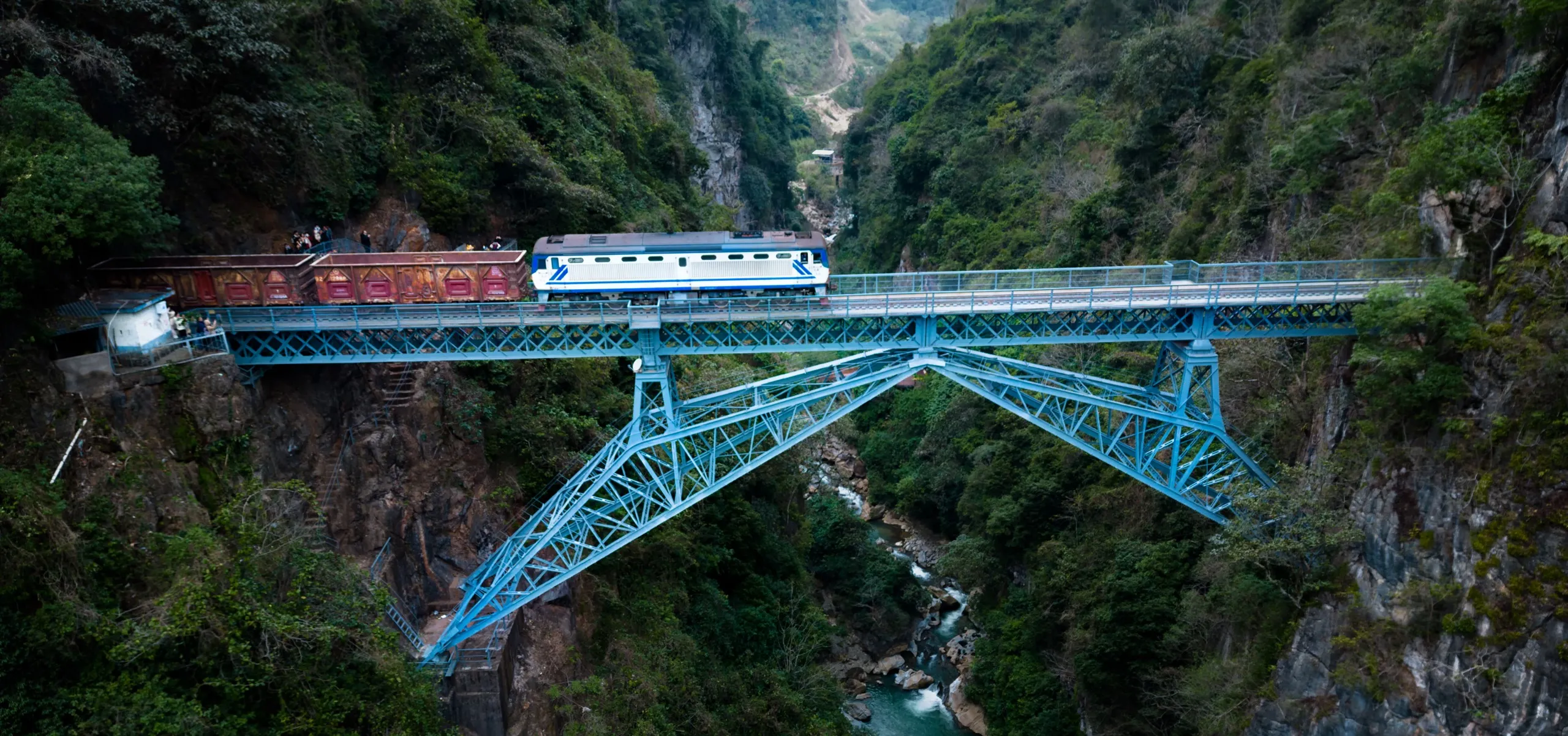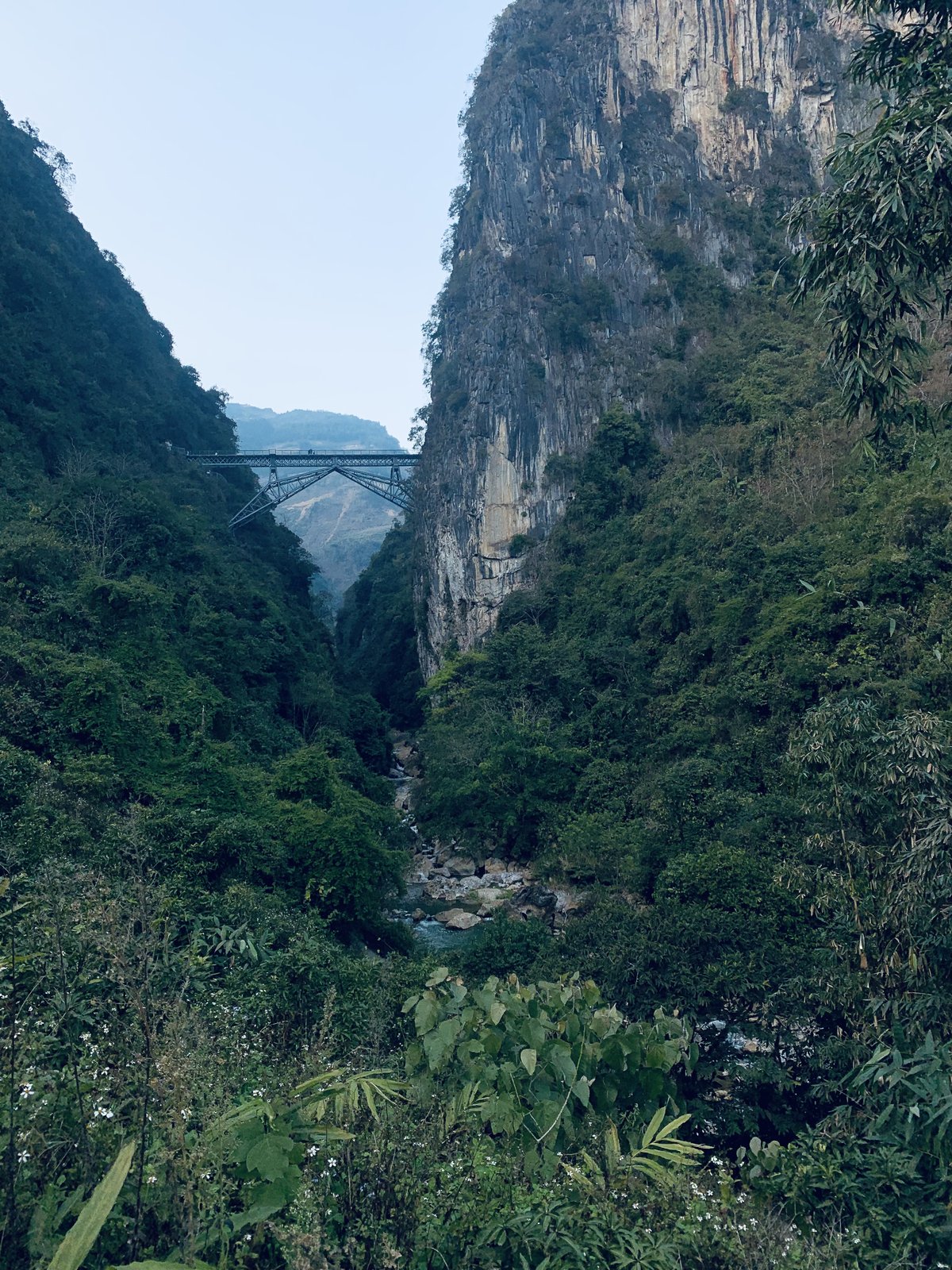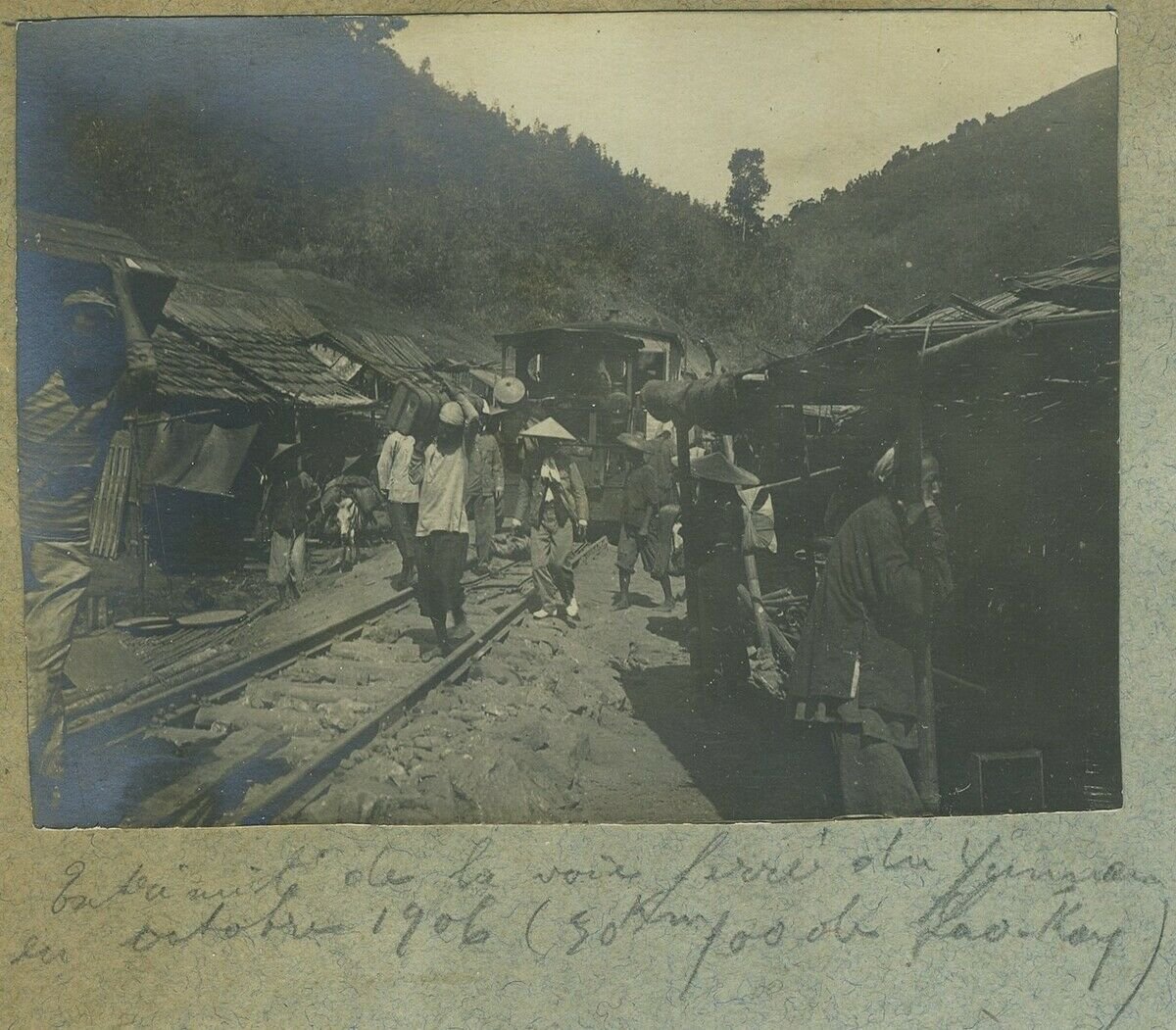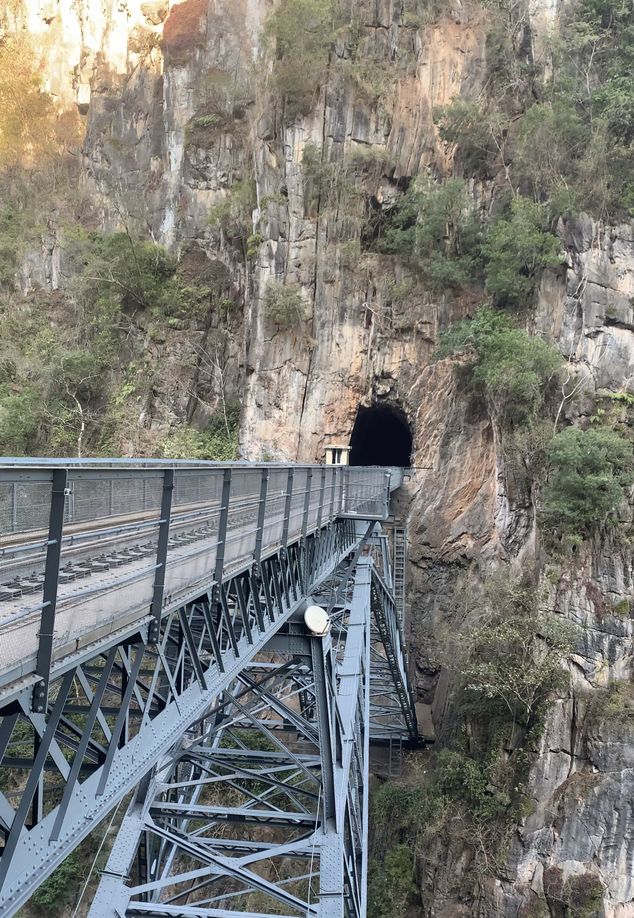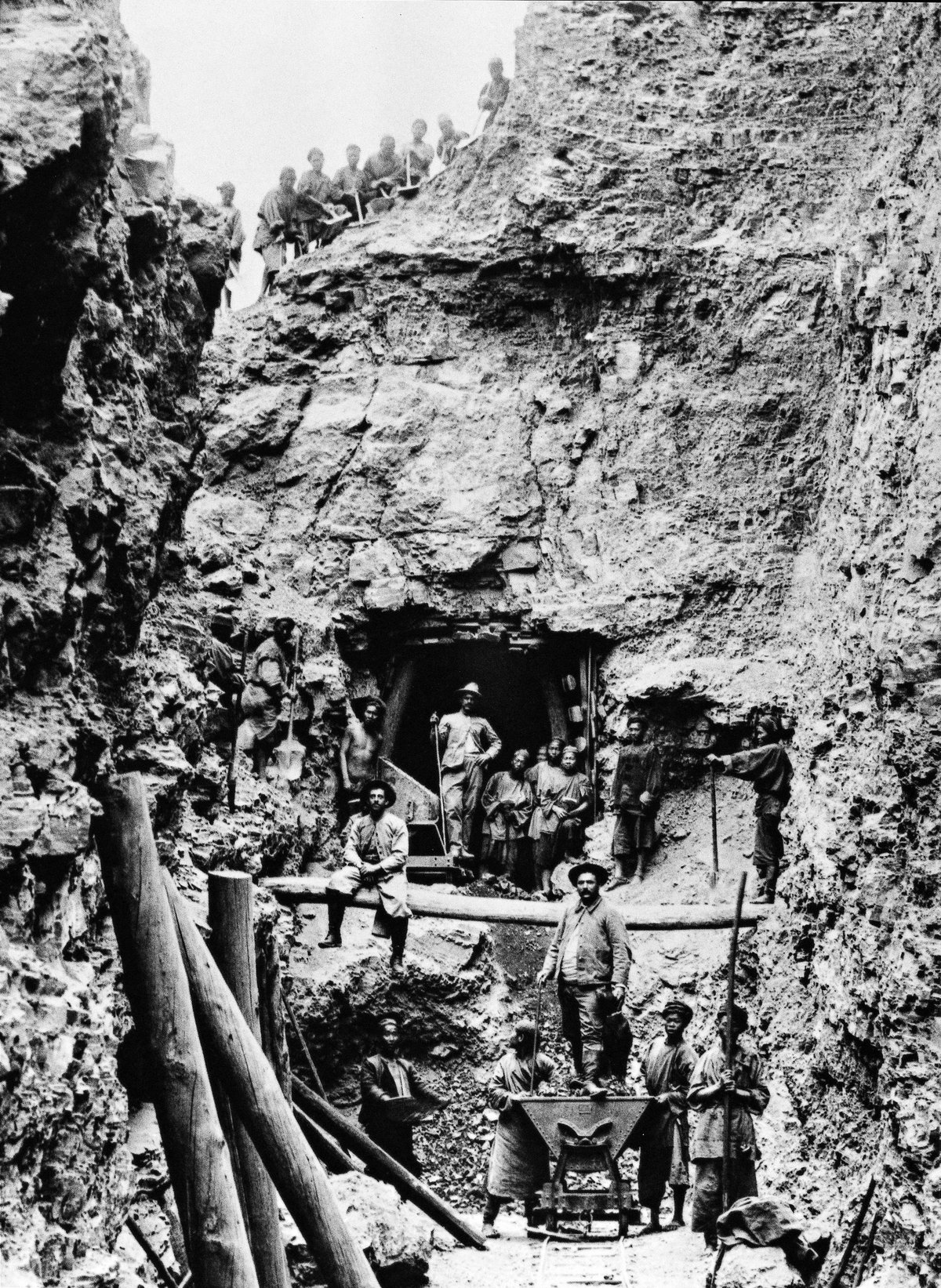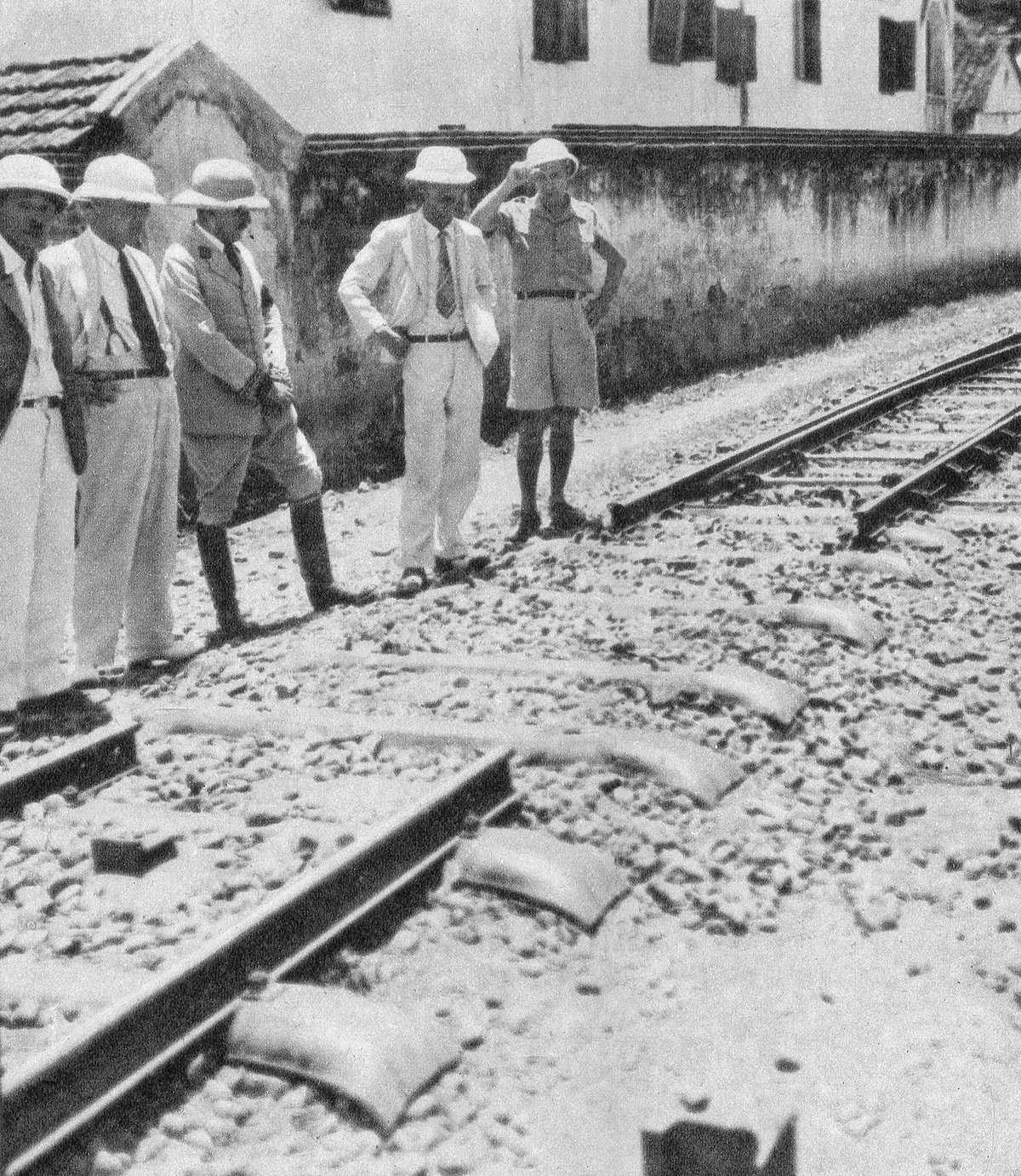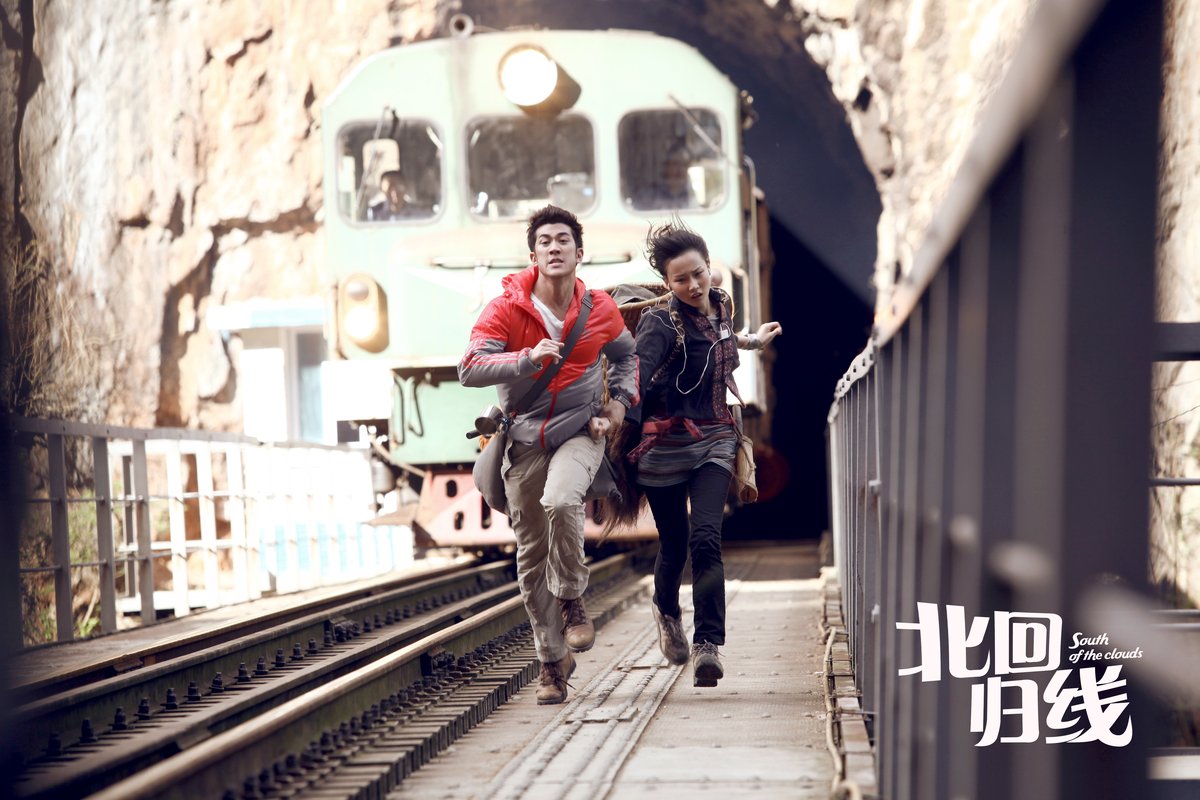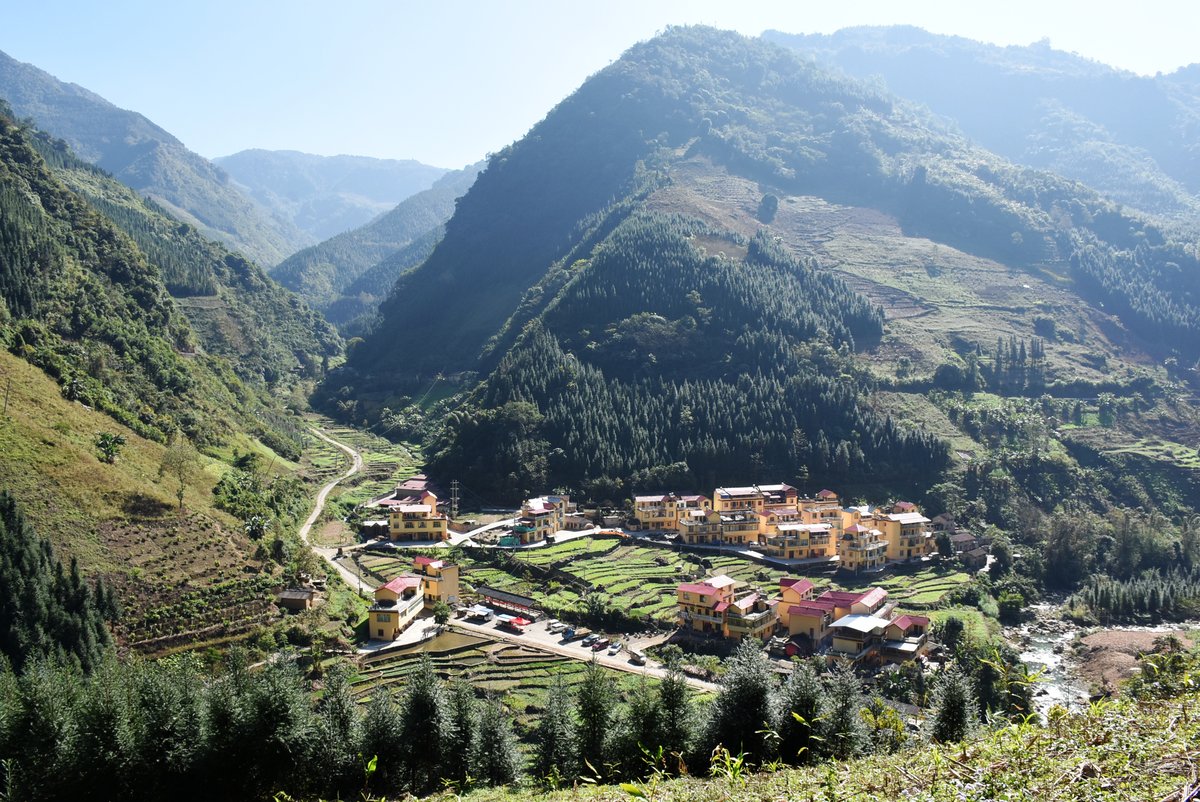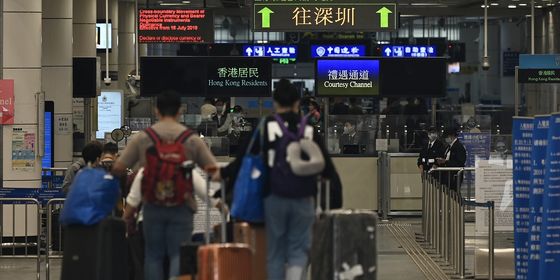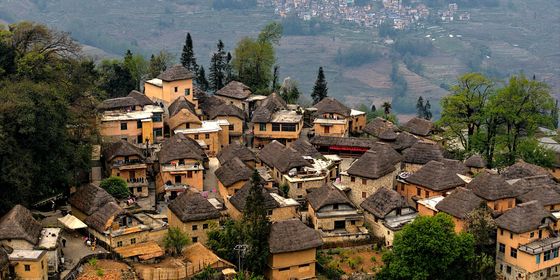A spectacular 115-year-old railway bridge in Yunnan province stands as a reminder of the Chinese workers who died in its construction
After walking what seems like an eternity through eerily dark tunnels, a fading sunset comes into view over what was once an engineering marvel. Renziqiao, designed by French engineers and painstakingly built by Chinese workers 115 years ago, straddles a 65-meter-wide gorge in between two mountains 102 meters above the roaring Sicha River.
But the distinctive steel bridge, completed in 1908 to facilitate colonial trade from China’s southwest to French Indochina, came at a terrible human cost. This was one of the deadliest colonial construction projects ever inflicted on China, with an estimated 800 Chinese laborers dying during construction—around 12 lives lost for every meter of bridge laid.
Now, the bridge is something of a tourist site (along with a few other sections of the Yunnan-Vietnam Railway, like Bisezhai) located deep in the mountainous forests of Yunnan, around an hour from Pingbian city in Honghe Hani and Miao Autonomous Prefecture. Visitors make the journey to see a piece of history, to buy trinkets in a “traditional” Miao village that has recently been constructed around the bridge, and to remember the colonial legacy the French left in Yunnan. One plaque at the tourist site around Renziqiao bridge carries a quote from an unnamed French engineer involved in its design: “For each sleeper laid, a life taken, for each spike, a drop of blood.”
Commonly referred to as Renziqiao (人字桥) for its unique arch design that looks like the Chinese character “人” (meaning “person” or “people”), the iconic bridge was deemed so difficult to construct, so breathtaking in its ingenuity that British newspaper The Times described it as one of the “three engineering marvels of the world” alongside the Suez and Panama canals in 1910.
Renziqiao is one of 178 bridges along the 854-kilometer Yunnan-Vietnam Railway, and lies in the Kunhe section of the line that runs from the Chinese border city of Hekou to the provincial capital Kunming. Though Renziqiao was perhaps the most complicated and expensive part of the railway’s construction, the whole initiative was a logistical and financial challenge from the start. The steel for construction was produced in France and imported to China, while the project faced delays and funding issues, as well as trouble with the challenging terrain, and endless wage disputes with laborers. It is estimated that the Yunnan-Vietnam Railway cost a total of 159 million francs to complete.
The motivation for such a vast outlay came from France’s colonial ambitions in Southeast Asia and beyond. France had invaded Vietnam in 1858, and slowly expanded the reach of “French Indochina” across Cambodia, Laos, and parts of southwest China. The railway project in Yunnan was meant to expand the French empire’s transportation network and extend its access to foreign markets, like China, into which it could sell French goods.
In 1903, the French signed the Yunnan-Vietnam Railway Regulations treaty with a declining Qing empire powerless to resist. This allowed France to build and operate the railway (with the land provided by China for free), and allowed them to plunder Yunnan’s many natural resources.
By 1897 the railway was planned to run from Kunming to Hai Phong (a major port city in northeastern Vietnam). But the pass at Renziqiao posed a huge obstacle to the railway’s completion, where the track needed to pass between two high mountains over 100 meters above the ground. This route was chosen as the most direct, and one that would reduce the amount of uphill running (which requires more power) the trains had to do, but conventional bridge design techniques wouldn’t work at this altitude. Construction typically relied on laying falsework (temporary supporting structures around which the permanent structures would be built) which would be extremely difficult to install at such a height. Building a cantilever bridge (one that extends horizontally, supported by two points at either end) was also impossible due to the lack of space on the two opposite mountains.
The project leader, French engineer Paul Bodin, thus developed a new technique involving lowering two steel, triangular trusses, one from each side of the mountain, till they met in the middle of the bridge, forming a v-shaped structure in the center. Finally, on March 10, 1907, after the French construction company secured additional funding equivalent to 3.28 million British pounds (on top of an initial 3.84-million-pound budget) for the railway, the sounds of construction workers hammering away high above the river could be heard. Bodin’s ingenious idea worked, and this is what gives Renziqiao its distinctive shape today.
Though the engineering challenge was solved, the safety of workers—who hailed from Yunnan, but also northern provinces like Shandong, and the eastern coast of Fujian and Zhejiang—was not. The terrain was treacherous, with frequent rockslides, tropical diseases, and extreme weather patterns. Cave-ins in the tunnels either side of the mountain often injured or killed workers, while also demolishing part of the construction. To construct the steel trusses supporting the bridge, laborers worked high above the canyon floor with no safety harnesses. A French newspaper commented that the construction of the bridge was a “dance above death.” The lives lost at Renziqiao were part of perhaps 12,000 souls who perished in the construction of the whole Yunnan-Vietnam Railway.
Finally, on December 6, 1908, the first train crossed, and in the first year of operation over 73,000 tons of goods were transported over the bridge. During the time the French remained in control of the railway, they extracted over 230,000 tons of tin from the mines in Gejiu, a city not far from Renziqiao that became known as the tin capital of the world, much of it traveling over the famous bridge.
Later, the railroad was a vital piece of infrastructure during the war against Japan, with German-occupied France cutting off supplies to China via the railway in 1940 under pressure from the Japanese. As the tide turned against Japan, however, the Nationalist government retook control of the railway in 1943, ending foreign ownership. Then, after the Communist Revolution in 1949, the PRC nationalized the railway under the Kunming Railway Bureau. Supplies sent to northern Vietnam’s communist regime traveled along the old colonial tracks in the 1950s, 60s, and 70s.
Though much of the railway suffered damage over the decades of conflict and tumult, Renziqiao survived unscathed, and is now gaining new life as a tourist location. In 2014, the popular romantic comedy film South of the Clouds (《北回归线》) featured a scene where the protagonists run across Renziqiao as a train comes thundering after them. Likewise, social media apps like Xiaohongshu are full of images of people on the tracks against the spectacular backdrop, though few posts mention the deaths in its construction.
Renziqiao is still rather remote, despite improvements in road infrastructure in recent years. It remains in mountains often shrouded by dense fog, and surrounded by fields of star anise. The village at Renziqiao was developed in 2007, with locals (mostly of the Miao ethnic group) relocated from nearby Aotang village as part of a local government plan to alleviate poverty by tying the area more closely to tourism centered on the railway. More villagers from surrounding areas have since moved to the historical landmark to take advantage of the tourists and government funding that continue to flow into the area. The village has constructed French colonial-style buildings, and more construction is planned. In October 2017, a development project saw new hiking routes and a scenic area created between the bridge and the village.
Past the trinket stalls in the village, visitors can hike up to the bridge in around 45 minutes. Trekking up the dirt steps of the steep cliffs, one is reminded of the Chinese workers from a century ago who had to carry 50-pound steel rails, 77-pound sleepers, and 290-meter chains up for the construction. At the top, visitors can step onto the tracks when no trains are scheduled. Though passenger trains ceased running in this part of the line in 2005, freight trains still run daily across the sturdy tracks.
A walk through an eerily dark tunnel brings visitors to the bridge. As the sun sets over the mountains, a security guard barks at tourists to move off the tracks and to the viewing platform. Through the darkness in the mountains, a piercing “toot” drifts through to watching tourists, until the train rumbles steadily across the towering 115-year-old bridge. It’s gone quickly, disappearing into the once-treacherous tunnels ahead, over the tracks laid by Chinese workers who risked life and limb to build an engineering marvel.





